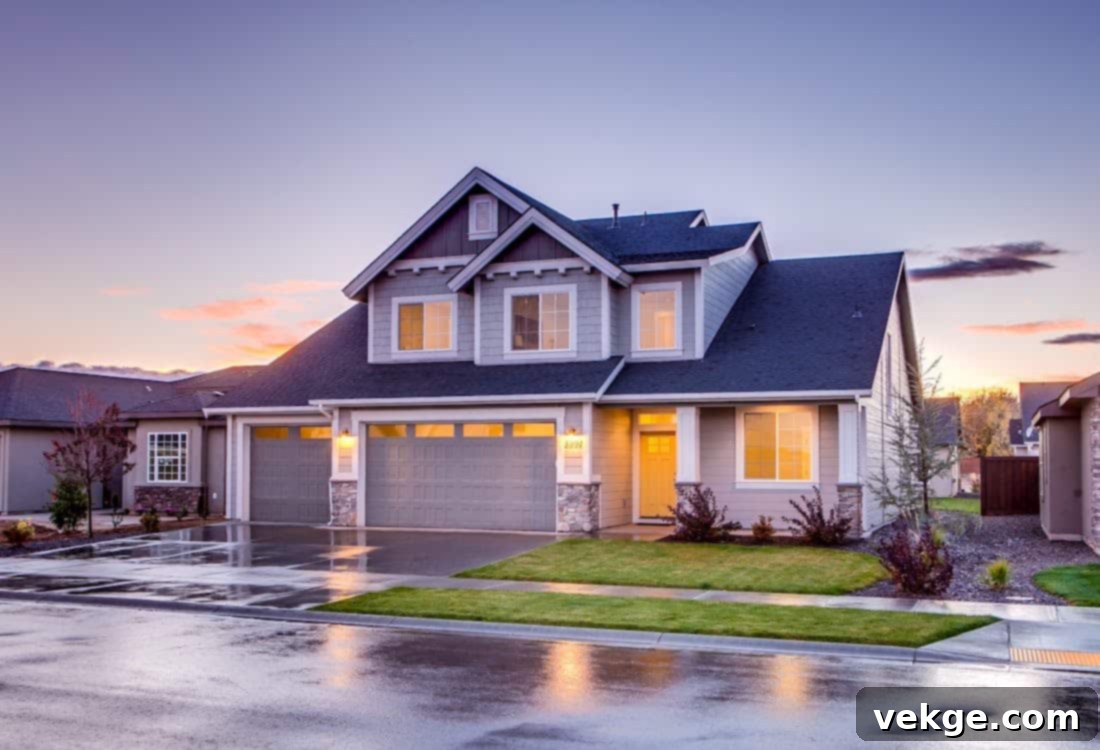Ultimate Guide to Choosing and Installing the Best Home Drainage System
An efficient drainage system is often the unseen guardian of your home, silently working to protect its structural integrity, prevent costly basement flooding, and maintain the health of your valuable landscaping. Yet, with a myriad of options available, selecting the right system can seem like a daunting task for many homeowners.
This comprehensive guide is designed to navigate you through the process. We will explore the critical factors to consider when choosing a drainage system, from thoroughly understanding your property’s unique requirements to delving into the various types of systems and their installation intricacies. Our goal is to empower you with the knowledge to make an informed decision, ensuring your home remains dry and secure for years to come.
Understanding Your Home’s Unique Drainage Needs
Before investing in any drainage solution, it’s paramount to assess your home and property thoroughly. Here are the key factors that will dictate the most effective system for your specific situation:
Property Type and Foundation
The type of foundation your home is built upon profoundly influences its drainage requirements. Each foundation style presents distinct challenges and necessitates specific solutions to prevent water-related damage.
- Basement Homes: These properties are particularly susceptible to hydrostatic pressure, where water accumulating in the soil around the foundation can exert immense force, leading to leaks, cracks, and even structural compromise. Effective drainage for basements typically involves solutions that divert water away from the foundation walls and manage groundwater.
- Crawlspace Homes: While not as prone to overt flooding as basements, crawlspaces can suffer from excessive humidity and standing water, fostering mold growth, wood rot, and pest infestations. Drainage here aims to keep the crawlspace dry and well-ventilated.
- Slab Foundations: Homes on slab foundations primarily need perimeter drainage to prevent water from pooling near the edges and seeping underneath, which can cause slab heave or settlement.
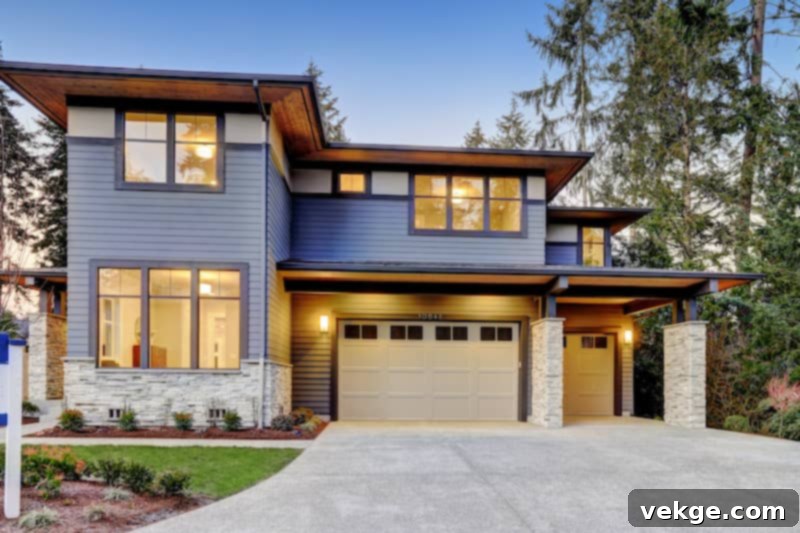
As highlighted by Architectural Digest, French drains are exceptionally effective at preventing issues like basement flooding or structural damage caused by excessive moisture. This system works by collecting water around the foundation within a gravel-filled trench that houses a perforated pipe. The water then infiltrates this trench and is efficiently directed away from the home, either by gravity to a lower point on the property or with the assistance of a sump pump to a designated discharge area.
This setup proactively redirects surplus water, significantly reducing the likelihood of flooding or structural harm due to hydrostatic pressure. Furthermore, French drains often complement other vital drainage solutions such as downspout extensions, advanced gutter systems, strategic landscaping, and retaining walls, making them a versatile choice for a wide array of property types and their unique challenges.
Soil Composition and Permeability
The type of soil surrounding your home is a critical determinant of natural drainage. Understanding its composition is key to selecting the right engineered solution:
- Sandy Soils: Characterized by large, coarse particles, sandy soils boast excellent permeability. Water drains quickly and efficiently through them, reducing the risk of pooling around your foundation. While generally good for drainage, extremely sandy soils might sometimes allow water to drain *too* quickly past plant roots.
- Clay Soils: In stark contrast, clay soils consist of very fine, densely packed particles. This composition leads to poor drainage properties; water struggles to penetrate, often pooling on the surface or sitting stubbornly around the foundation. Homes built on clay soil almost always require robust engineered drainage solutions to prevent accumulation and its associated problems.
- Loamy Soils: A balanced mix of sand, silt, and clay, loamy soils offer good drainage while retaining essential moisture and nutrients, ideal for landscaping.
Knowing your soil type helps determine the intensity and design of your drainage system. For clay soils, more extensive subsurface systems like French drains or extensive grading might be necessary.
Local Rainfall Patterns
The amount and intensity of precipitation in your area significantly influence your drainage needs. Regions experiencing high annual rainfall or prone to heavy, sudden downpours will require more robust drainage systems capable of handling large volumes of water quickly and efficiently. Conversely, areas with less rainfall might find simpler, less extensive systems sufficient.
Moreover, Forbes highlights that installing a rain barrel or cistern can be a highly cost-effective and environmentally friendly way to manage rainwater runoff. This practice not only reduces your home’s flood risk, especially in low-lying or flood-prone areas, but also conserves water for irrigation during drier periods. Many local governments offer incentives or rebates for installing rainwater harvesting systems, making them an even more attractive option.
The size of your rainwater harvesting system should align with your budget, water usage needs, and local rainfall patterns. Standard rain barrels typically hold around 55 gallons but can range up to 100 gallons. For more extensive water collection, cisterns can be much larger, capable of holding thousands of gallons, providing a significant reserve for landscape watering or even non-potable household uses.
Existing Landscaping and Property Grade
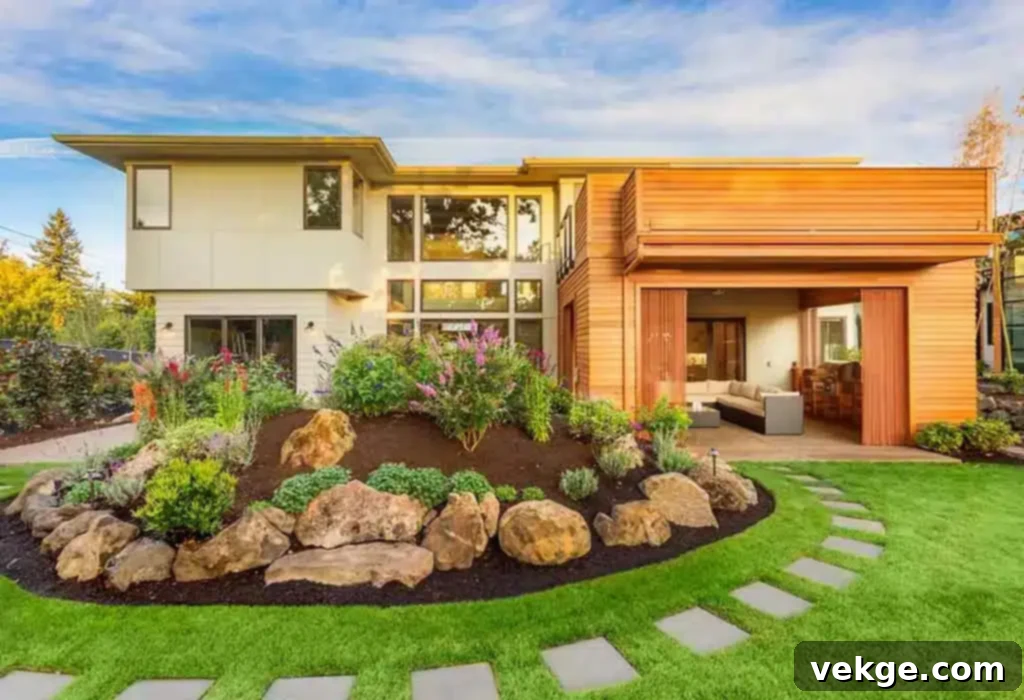
The existing elements of your landscaping, including gardens, patios, walkways (hardscaping), and the natural slope of your land, play a significant role in influencing drainage patterns and must be carefully considered in your system design. Slopes that direct water towards your foundation, for instance, are a red flag and will certainly require additional measures, such as regrading or diversion channels, to steer water away effectively.
Integrating a new drainage system with existing landscaping requires careful planning. Underground drainage pipes may need to be strategically routed to navigate around established trees, garden beds, or paved areas without disrupting them. Considering how your drainage system will interact with your landscaping from the outset is crucial for ensuring a cohesive, functional, and aesthetically pleasing solution. Techniques like permeable paving or rain gardens can also enhance landscape drainage naturally.
Exploring Different Types of Home Drainage Systems
Once you have a clear understanding of your property’s specific drainage challenges, the next step is to explore the various types of systems available. Many homes benefit from a combination of these solutions to achieve optimal water management.
1. Surface Drainage Systems
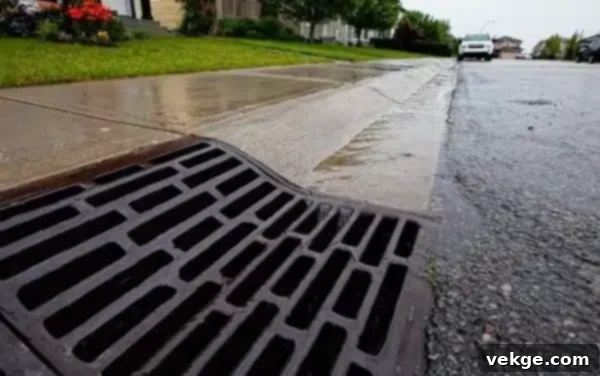
Surface drainage systems are designed to channel rainwater away from your foundation *before* it has a chance to seep into the ground. They are the first line of defense against water damage.
- Gutters and Downspouts: These are fundamental components. Gutters collect rainwater from your roof, and downspouts direct it downwards. It is critical to extend downspouts at least six feet away from the foundation, preferably onto splash blocks or into subsurface drain lines, to prevent water from simply pooling at the base of your walls. Regular cleaning of gutters and ensuring they are properly sloped is vital for their effectiveness.
- Grading: Ensuring your landscape slopes away from your home at a minimum of 2% (a drop of 2 inches for every 10 feet) is one of the most effective and often overlooked surface drainage solutions. Proper grading directs water naturally away from the foundation.
- Swales: These are shallow, gently sloped ditches or depressions strategically placed around your property. Swales are designed to collect and convey surface water to a more suitable discharge area, such as a street, drainage ditch, or rain garden, preventing it from reaching your home. They can be aesthetically integrated into your landscape with appropriate planting.
- Catch Basins and Trench Drains: For hardscaped areas like patios, driveways, or sidewalks that collect water, catch basins (grated inlets) and trench drains (long, narrow channels) can effectively collect surface runoff and direct it into an underground piping system.
2. Subsurface Drainage Systems
Subsurface drainage systems are designed to manage groundwater and water that has already permeated the soil. They are particularly crucial for homes with basements, crawlspaces, or on properties with heavy clay soils where surface drainage alone is insufficient.
- French Drains: As previously mentioned, these are the most common type of subsurface drain. A French drain consists of a trench filled with gravel, containing a perforated pipe. Water seeps through the gravel into the pipe and is then channeled away from the foundation. They are typically installed around the perimeter of a house, along retaining walls, or across saturated areas of a yard.
- Perimeter Drains (Weeping Tile): Often installed during home construction, these are similar to French drains but are placed around the exterior base of the foundation footings to collect groundwater before it can enter the basement or crawlspace.
- Area Drains: These are localized subsurface drains, often comprising a catch basin connected to an underground pipe system, used to drain specific low spots in a yard that collect standing water.
- Dry Wells: A dry well is an underground chamber, often filled with gravel or a pre-fabricated plastic chamber, that allows collected water from downspouts or subsurface drains to slowly infiltrate back into the ground. They are an excellent solution where there isn’t a suitable gravity-fed discharge point.
3. Sump Pumps
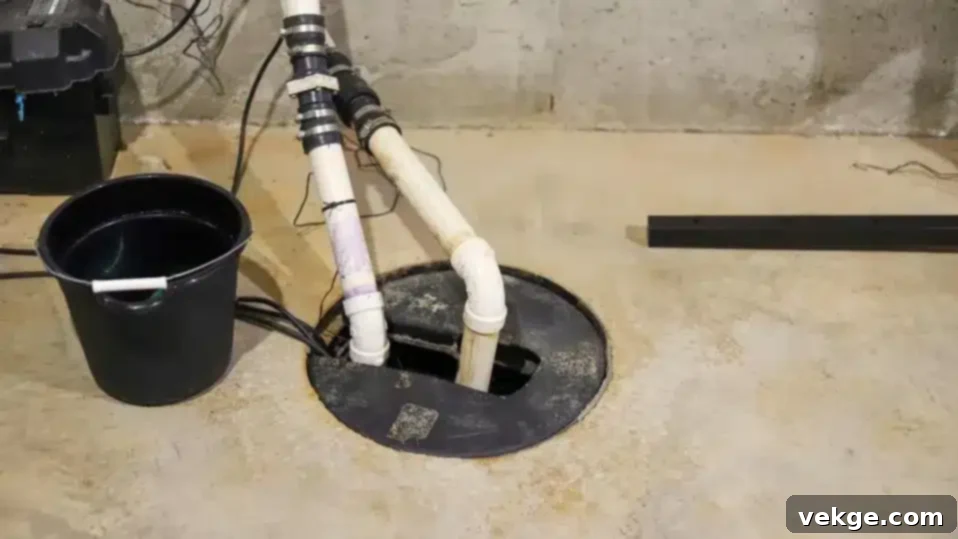
In basements and crawlspaces, sump pumps serve as the ultimate last line of defense against significant water infiltration. These essential devices are positioned within a sump pit, which is a basin dug into the lowest part of the basement floor to collect water. When water levels within the pit surpass a preset threshold, the electric pump automatically activates.
Subsequently, the pump efficiently expels the accumulated water away from the foundation, typically through a designated discharge pipe that leads outdoors, far from the house. There are two main types: submersible pumps (which sit in the water and are quieter) and pedestal pumps (motor sits above the pit, generally louder but easier to access).
As advised by TownLift, regular maintenance of your sump pump is absolutely crucial for optimal performance and reliability. This includes routinely checking the sump pit for debris that could clog the pump, testing the system before anticipated heavy rain events, inspecting for any signs of damage to the pump or discharge pipes, and ensuring all power connections are secure and functional.
For added peace of mind, particularly in regions prone to frequent flooding or power outages, consider installing a backup sump pump. Battery-powered backup pumps provide temporary protection during electricity disruptions, while water-powered backup pumps, utilizing Bernoulli’s principle from your home’s water pressure, offer a reliable and often overlooked option that doesn’t rely on electricity.
Essential Installation Factors and Considerations
The successful implementation of any drainage system hinges on careful planning and execution. Several key factors must be considered during the installation phase to ensure effectiveness and longevity.
DIY vs. Professional Installation
The complexity of your chosen drainage system significantly impacts whether it’s a suitable DIY project or requires professional expertise. Simple surface drainage solutions, like extending downspouts or installing basic splash blocks, can often be handled by enthusiastic DIYers with fundamental knowledge and tools.
However, according to SitePro Rentals, intricate subsurface drainage systems involving deep trenches, precise grading, the laying of perforated pipes, and connection to discharge points typically demand professional installation. Professionals bring specialized equipment, extensive experience, and an understanding of local regulations, often providing guarantees on their work.
If you opt for the DIY route, be prepared for considerable physical labor and a commitment to thorough research. While some basic tools might be readily available, for projects requiring substantial earthmoving, such as digging long trenches for French drains, consider renting specialized equipment like mini excavators. These versatile machines can significantly streamline the excavation process, allowing for more efficient and precise trench digging and land grading compared to manual labor, ultimately saving a tremendous amount of time and effort.
It’s crucial to ensure you possess the necessary skills and knowledge to operate such heavy equipment safely. Numerous detailed online resources and instructional videos can serve as invaluable guides for safe operation and effective project execution.
Local Regulations and Permits
Before embarking on any significant drainage system installation, always check with your local building department or municipal authority. Building codes often have specific regulations regarding drainage system design, the types of materials that can be used, and installation procedures. Obtaining any necessary permits is not merely a bureaucratic hurdle; it ensures your system complies with local standards, avoids potential delays, costly fines, or the need for rework. Proper permitting also provides a layer of legal protection and can be important for future property sales.
Long-Term Maintenance and Accessibility
A well-designed and properly installed drainage system is engineered for efficiency and minimal maintenance. However, planning for future maintenance access during the installation phase is crucial for ensuring its long-term effectiveness. For example, incorporating easily accessible clean-out points into your subsurface drainage lines makes clearing debris, roots, or sediment a breeze, preventing blockages that could lead to system failure.
Similarly, ensuring that sump pump basins are readily accessible simplifies routine inspections, cleaning, and any necessary repairs or replacements. By factoring in the practicalities of long-term maintenance from the outset, you can ensure your drainage system remains fully functional and efficient for many years to come, protecting your investment and your home.
Frequently Asked Questions About Home Drainage Systems
What are the principles of a good house drainage system?
A good house drainage system is founded on several core principles: it efficiently diverts water away from the foundation and key structures, it is properly sized and designed to handle the anticipated volume of runoff (considering both normal rainfall and heavy storm events), and it includes provisions for regular maintenance to prevent clogs and ensure continuous operation. Furthermore, it complies with all local building codes and regulations, and ideally incorporates eco-friendly practices, such as directing water to permeable areas or rain gardens, ensuring both long-term effectiveness and environmental responsibility.
What are the qualities of a good drainage system?
A good drainage system exhibits several key qualities. It must have sufficient capacity (often referred to as ‘headroom’) to handle sudden and heavy downpours without becoming overwhelmed or compromising its performance. For instance, gutters must be appropriately sized based on your roof’s slope, surface area, and local rainfall intensity. Additionally, downspouts should match the capacity of the gutters and extend far enough to ensure efficient water flow away from the property’s foundation, preventing localized saturation. Durability of materials, proper installation, and ease of maintenance are also crucial qualities.
Which soil has the best drainage system?
Sandy soil typically possesses the best natural drainage system due to its relatively large, coarse particles and low water retention capabilities. This allows water to percolate quickly through the soil, preventing waterlogging and promoting healthy root growth for plants. However, while excellent for drainage, sandy soil may require more frequent irrigation and nutrient supplementation for optimal plant growth compared to soils with higher organic content, as nutrients can leach out quickly.
How much does a new home drainage system cost?
The cost of a home drainage system varies widely depending on several factors: the type of system (surface, subsurface, sump pump), the complexity of the installation, the size of your property, soil conditions, and whether you choose DIY or professional installation. Simple surface solutions like downspout extensions might cost a few hundred dollars, while a comprehensive perimeter French drain system with a sump pump can range from $5,000 to over $15,000. It’s best to get multiple quotes from qualified professionals after an on-site assessment.
What are the common signs that my home needs a better drainage system?
Several indicators suggest your home’s drainage is insufficient: standing water in your yard days after rain, water stains or efflorescence on basement walls, musty odors in the basement or crawlspace, cracks in your foundation or driveway, constantly wet soil near your house, eroded landscaping, or water overflowing from gutters during heavy rain. Addressing these signs early can prevent more significant, costly damage.
In conclusion, while an efficient drainage system may not be the most visible or glamorous home improvement, its profound importance cannot be overstated. By diligently understanding your property’s specific needs, thoroughly exploring the various system types available, and carefully considering all installation factors, you can develop and implement a comprehensive drainage plan that serves your home effectively.
Remember, the right drainage system extends far beyond merely preventing leaks and occasional flooding. It actively promotes a healthier living environment by meticulously controlling moisture levels, thereby preventing the proliferation of mold and mildew, safeguarding your foundation from debilitating structural damage, and protecting your cherished landscaping. This proactive approach translates directly into a drier, more comfortable, and safer home, simultaneously reducing the likelihood and expense of future repairs, enhancing your property’s value, and providing invaluable peace of mind.
